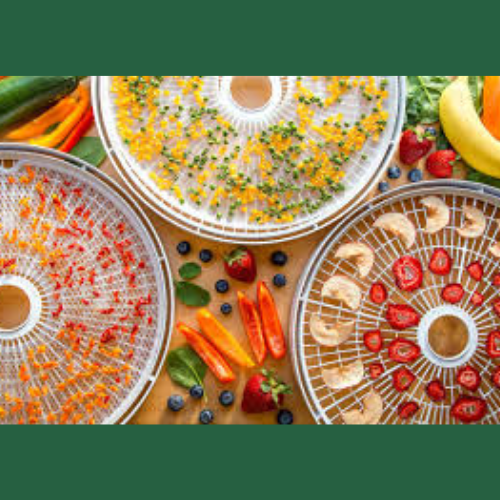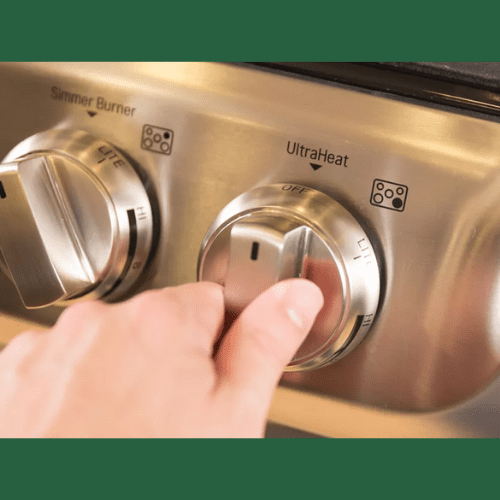Shelf Life of Dehydrated Food
The wonderful way to create a healthy snack is dehydration of vegetables and fruits for long-term storage and to save the commodity from spoilage. Avoid discarding food to save your groceries and your money. The process of drying removes moisture slowly with the preservation of flavor and retention of nutrients. The taste of dehydrated food is far better as compared to pre-packaged foods and is good for health.
You want to get rid of food items lying around in your kitchen or you end up discarding extra vegetables and fruits bought from the store? Rather than going for those options, it is better to save them by using a good food dehydrator. It is easy to learn the steps.
Proper storage and handling can make mealtimes easier and is budget-friendly. However, if you have no experience regarding food dehydration and processing, and you are asking yourself about the shelf life of dehydrated food.
In this article, we will focus on the life of dehydrated food and the ways to increase it. So let’s start.
How long will dehydrated food last?
The shelf life of less perishable food items is more and if properly prepared, stored, and dehydrated the commodity lasts for more than 5 years.
It is recommended to cook the dehydrated vegetables first to enhance the shelf life.
The studies revealed that dehydrated vegetables have a life of more than 10 years with proper preparation and storage. Dehydrated food is better as compared to canned food that possesses a life of fewer than 5 years.
The dehydrated food must be properly prepared, dried, and stored.
Long term or Short Term Storage
The dehydrated food can be stored for a maximum of 25 years however, if handled properly, the life can be enhanced for more than 25 years same as store-bought.
The dehydrated food items are better as compared to store-bought as you preserve them without the use of preservatives, fillers, or chemicals.
Is it good to store the commodity for this long period? It is preferred to consume food kept for less than 5 years or less.
The freshly dehydrated food is taken as short term, easily stored, and can be used in our daily food menus. The long term stored food products are beans, rice, oats, wheat, and freeze-dried food.
The type of food dehydrated should be less in fat content like nuts, avocadoes, and jerky. Jerky is high in fat content and is a great dehydrated option and should be stored for a long term in the freezer.
Factors to consider for long storage
The main points to consider for long term storage are
- Preparation
- Moisture content
- Packaging and storage
- Temperature for drying
1. Preparation of food before dehydration
The main and important point for the long storage of food.

- Wash the fruits and vegetables with a solution of water and vinegar before dehydration.
- Cleanse the product properly and leave it for 5-10 minutes. This will result in removing the wax and pesticides.
- Partial freezing is recommended for the most perishable fruits before cutting them.
- Gloves should be used for cleaning the produce to avoid bacteria and germs.
- Wash your hands properly if gloves are not available.
- Separate cores stem and seeds and cut the produce.
- The slices ar3e 1/8 inch thick and slice into 1-inch pieces.
- Oxidation occurs in some fruits like bananas, strawberries, and apples that darken in color once sliced.
- This causes a loss of nutrients and vitamins.
To minimize the oxidation process
- By spraying lemon juice also results in the killing of bacteria left on the skin.
- Clean the fruit with ascorbic acid.
2. Determination of right temperature
Proper temperature plays a significant role to dehydrate the product. The best temperature for dehydration for most fruits and vegetables is 125-135F.
The higher temperature will directly affect the outer skin making it tougher and the inside hasn’t fully dried out and kills off enzymes present in the food and causes the loss of nutrients.
Temperature range for different commodities
- Living foods 41C
- Herbs 41C
- Making yogurt 46C
- Fruits and Fruits rolls 57C
- Meat/ Fish 57C
- Vegetables 52C
- Jerky 63C

3. Control the Moisture Content
The commodity with less water has more storage life. The fruits like apricots and plums retain more moisture and are a bit sticky. The shelf life of these commodities is less as compared to vegetables like beans and potatoes which are completely dry.
How to tell the product is completely dry?
- The commodity is ready when the texture is sort of leathery and can be bend without breakage.
- The next step is conditioning the produce overnight on the counter in zipper bags.
- This will enable the even distribution of moisture with the elimination of damp spots.
4. Proper packaging and storage
Apart from browning, the process will affect the nutrition and flavor of the produce. The oxidation rate and vitamin retention in the food longer can be achieved by vacuum sealing.
There is a chance of moisture entry into the sealed package resulting in an oxidation problem.
The oxygen absorbers are added to the dried food package and are safe packets with activated charcoal and iron filings.
Storage Containers and Methods
To enhance the storage life of dried foods, place them in airtight, insect-resistant jars like glass (canning jars), freezer bags that are resistant to vapor and moisture, or vacuum packaging.
Vacuum sealing
This method is the easiest method to enhance the shelf life of all food items. The most widely used brand is FoodSaver Vacuum Sealer.

The meat can be sealed as soon as it is brought home from the store. This can be done in Ziploc-type FoodSaver bags.
Another reason to use these bags is to achieve crispy potatoes.
Storing meat or Jerky
Vacuum or glass bags are used to store jerky or meat, however, can be kept at room temperature for a short time as it contains fat content.
If vacuum sealed the meat can be stored best in the freezer or refrigerator for long term storage.
Storing in Mylar bags
The use of Mylar bags is another way of storing dehydrated foods. They are best as the bags are dark, rugged and just like bags or bottles, can be sealed without a sealer.
Inside the food, oxygen absorbers are adjusted and the bag is sealed and the O2 should absorb this oxygen.
An iron or ordinary hair straightener is used to seal the package.
FoodSaver Helpful Hints
The sealers possess strong absorption and suck moisture or particles into the machine.
- Keep the sealer clean
- Vacuum sealing powdered foods
- The punctured sealing bag
- Fragile foods
The Enemies of Food storage
The enemies are
- Light
- Temperature
- Moisture
- Oxygen
The shelf life can be enhanced with proper storage conditions. As compared to cooler temperatures the warm temperature will degrade foods quickly.
- the best temperature is less than 70
The moisture will increase the mold growth and degradation of dried foods. Oxygen is responsible for the formation of mold and to reduce it vacuum sealing and oxygen absorbers are used.
How do I choose a dehydrator?
The best criteria to select a perfect hydrator as per your choice are
- What type of dried food do you want to make?
- How much you are using it?
A basic type of dehydrator has a fan to remove moisture and for drying foods different types of stackable trays are present.
The advanced forms contain auto shut-off, digital timers, and horizontal fan features. They also have a large area for food drying and some have sliding trays for stacking purposes.
Tips for successful food dehydration and preservation
- Purchase a high-quality dehydrator
- The right temperature is used for your commodity
- Proper preparation and cleaning of your food
- To save costs dehydrate food that is in season
- Buy good quality storage products
- To get the most vitamins, nutrients and flavor dehydrate produce at its peak ripeness.
- Control moisture content
Conclusion
In this article, we have discussed that dehydrated food has an enhanced storage life by proper handling and preservation. It is a convenient way to save budget and food from wastage. An investment in a good dehydrator will assist you to store the food properly in less space and is the best solution for the provision of food quickly in emergency cases.
Frequently Asked Questions
1. Does dehydrated foods expire?
The storage time of dehydrated foods ranges from 4 months to 1 year. Dried foods with proper handling can be stored in a good freezer can last for years. The moisture content must be checked for safe storage.
2. Can you rehydrate dehydrated food?
You can consume dehydrated food in dry form however, you will want to rehydrate meats and veggies for most recipes before making the meal. The process of rehydration is dipping the food in water and the process can be aided by heating the food.
3. How much water does it take to rehydrate dehydrated food?
Twice as much water is required to rehydrate the amount of food. The bowl is filled with cold water and the food you are rehydrating.
Like 2 cups dried peas require 4 cups of cold water.
Related Posts

Chicken Breast or Tenderloin – Finding differences

How to Reheat the Piccata Chicken

